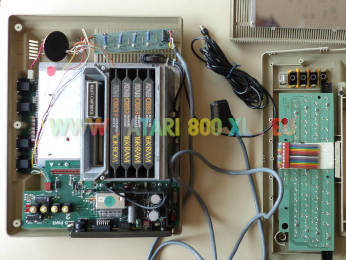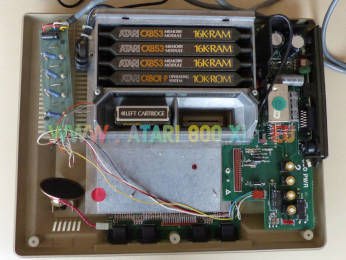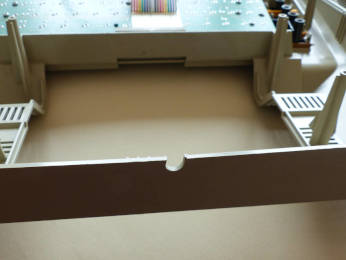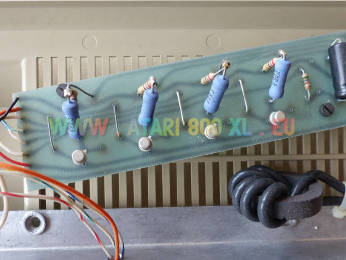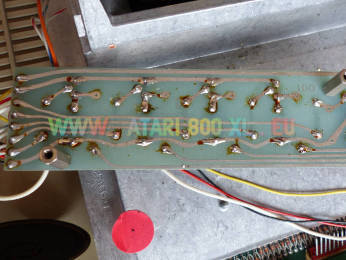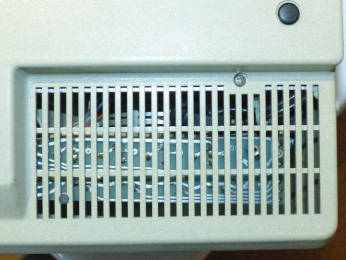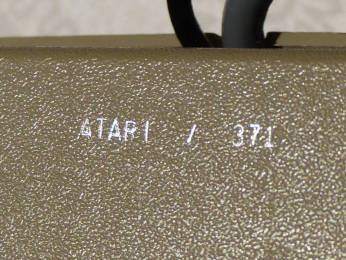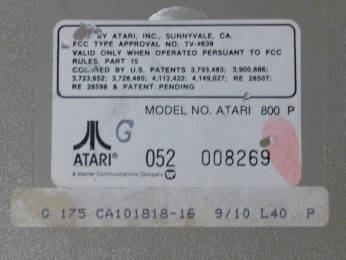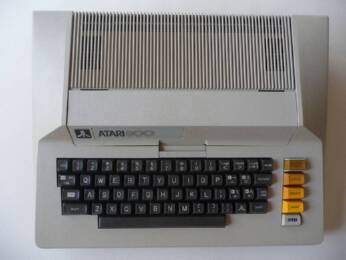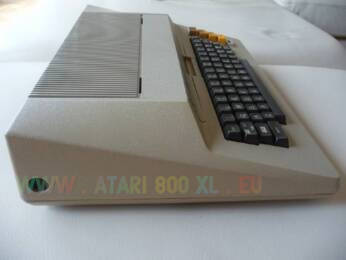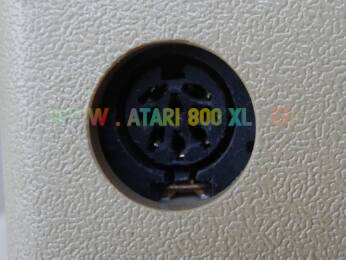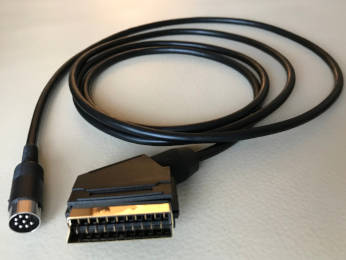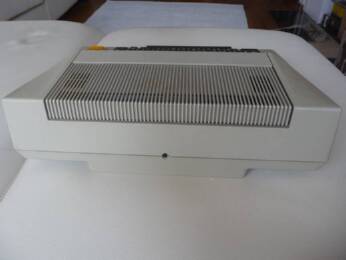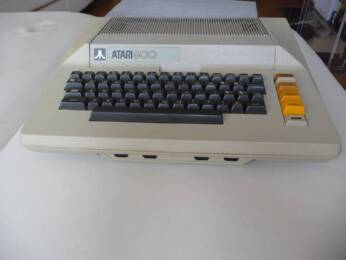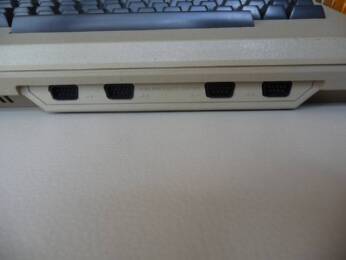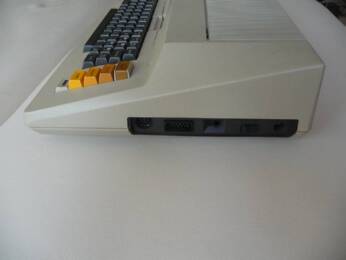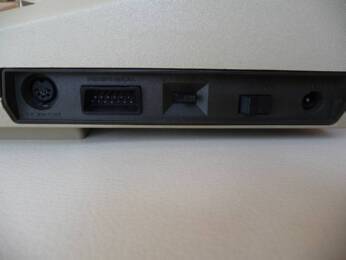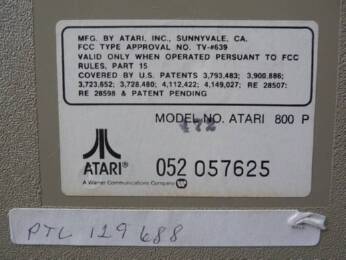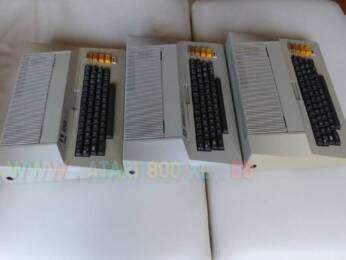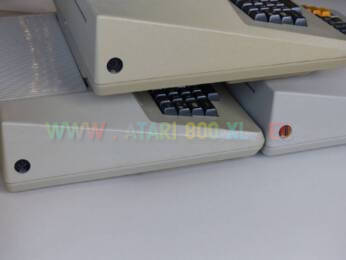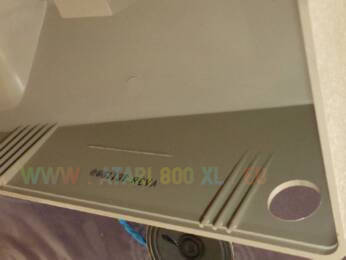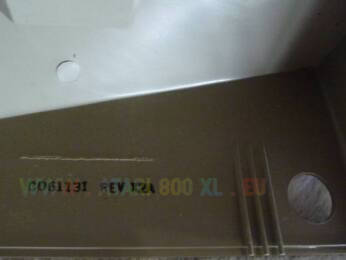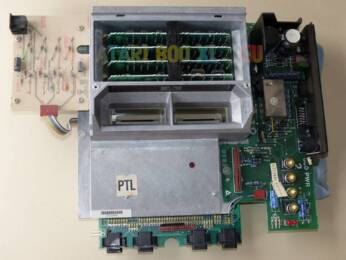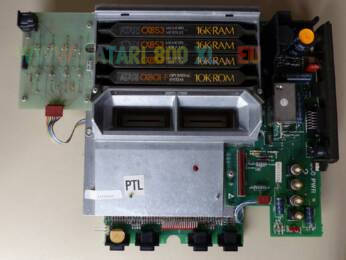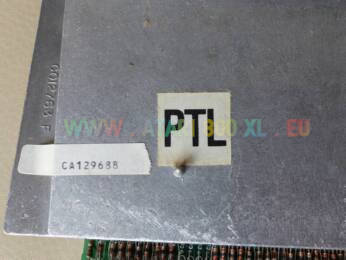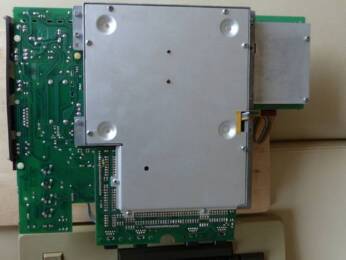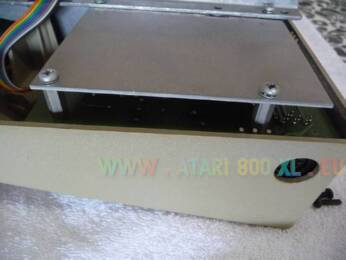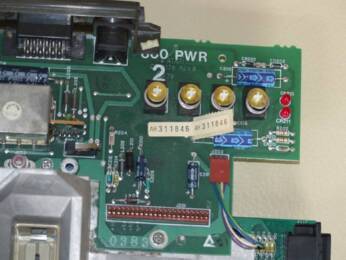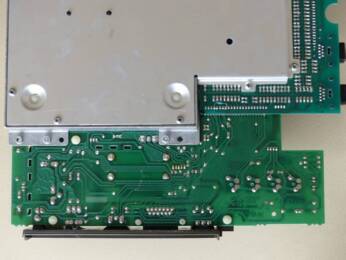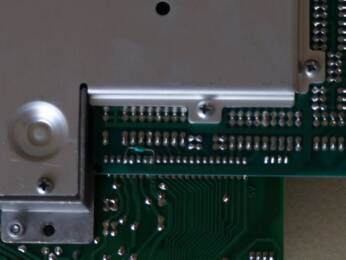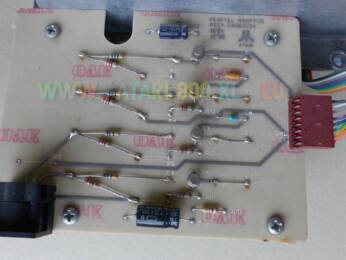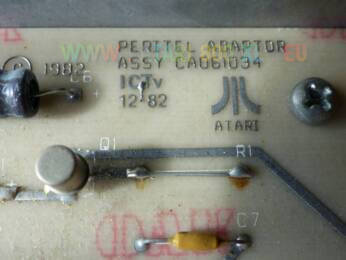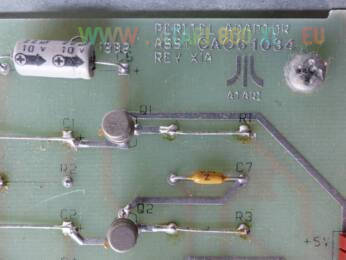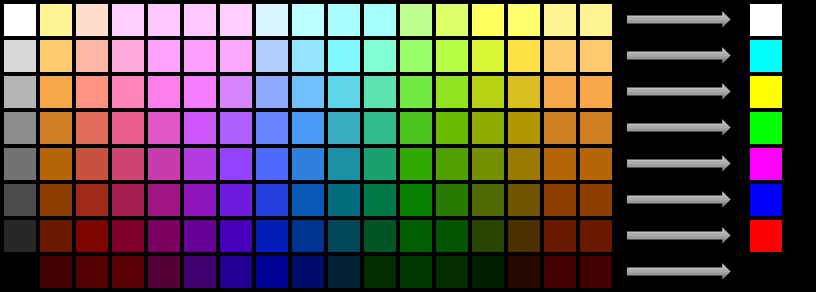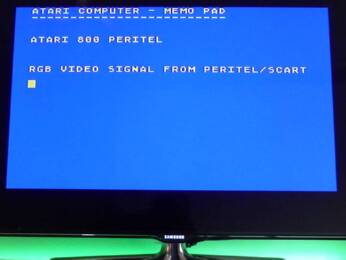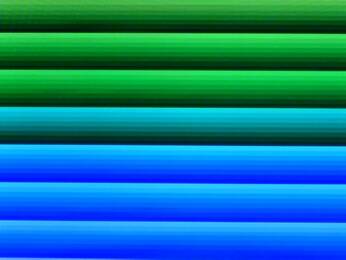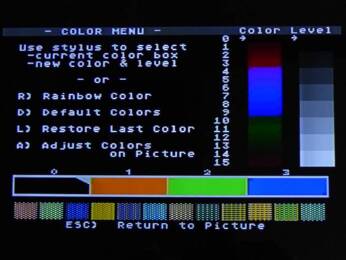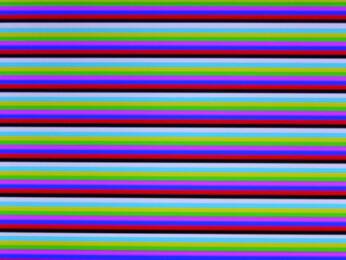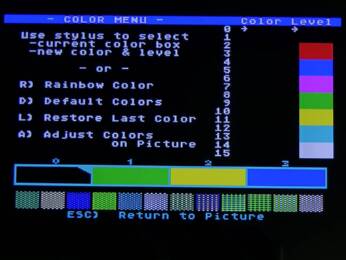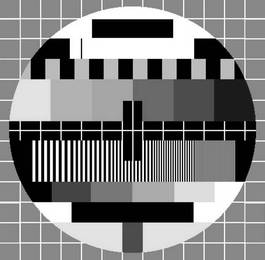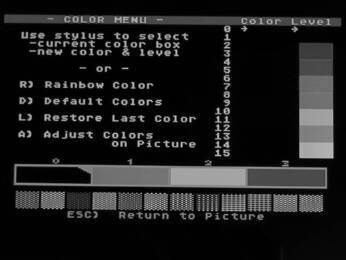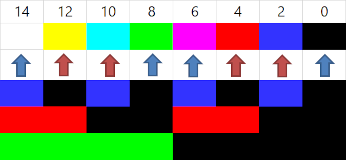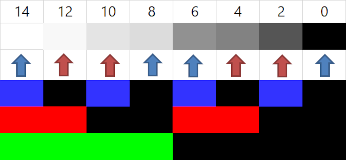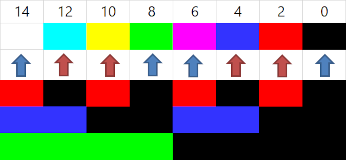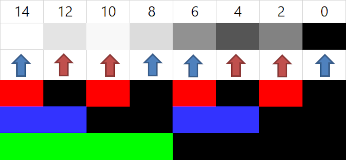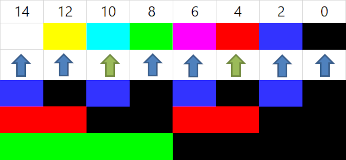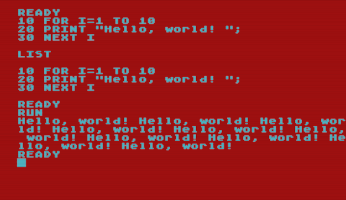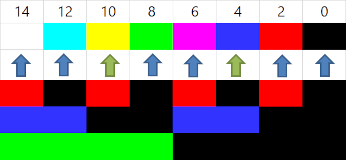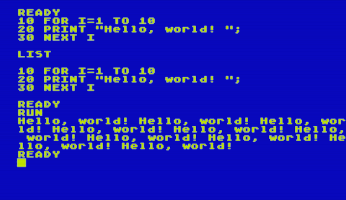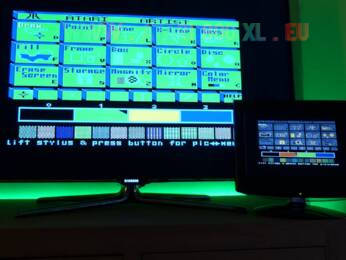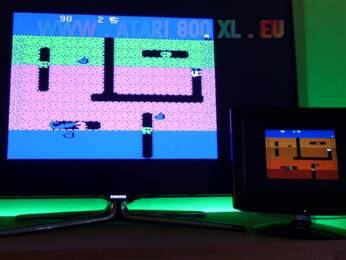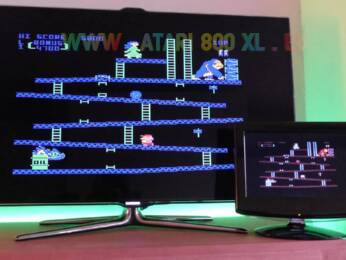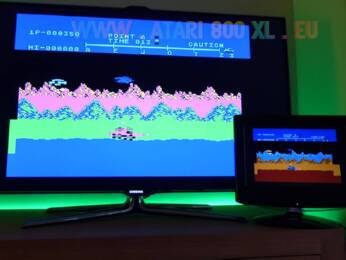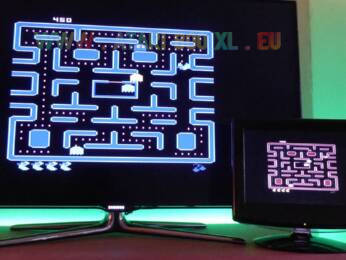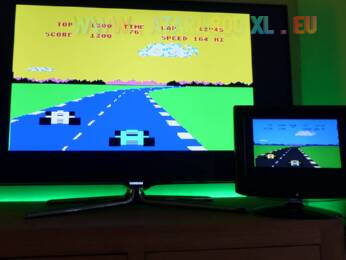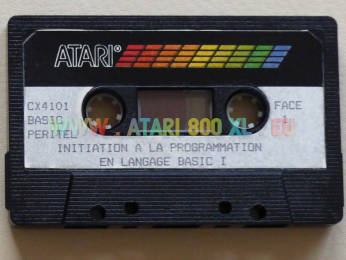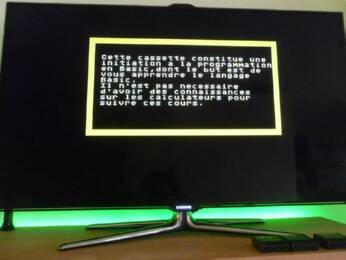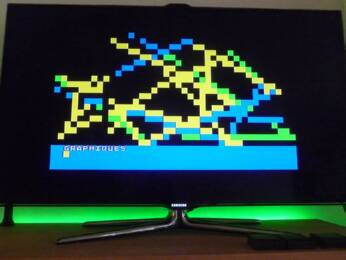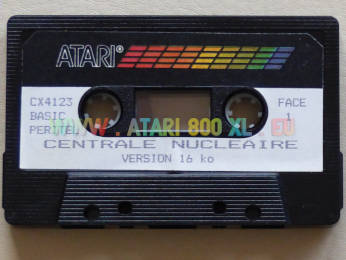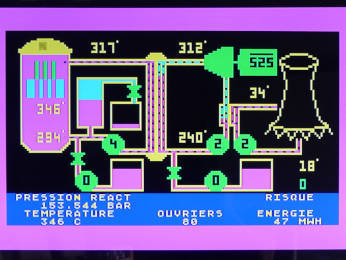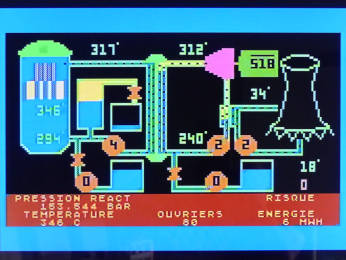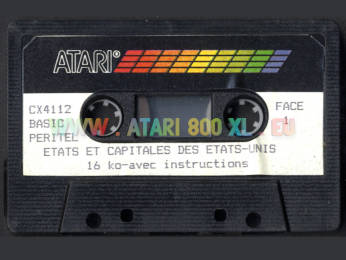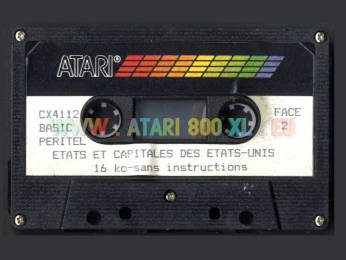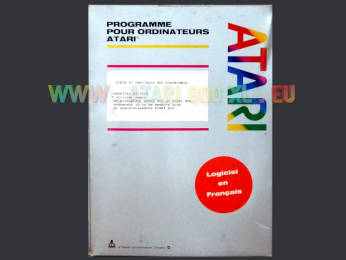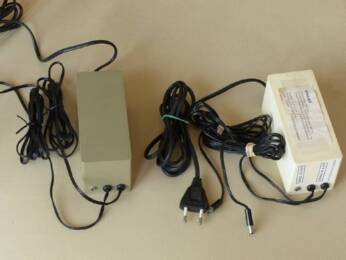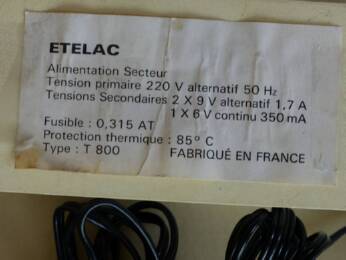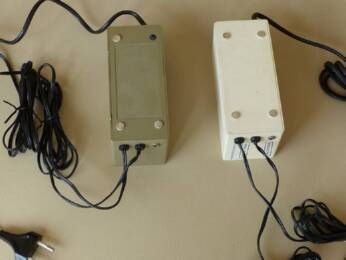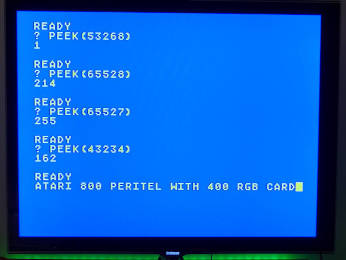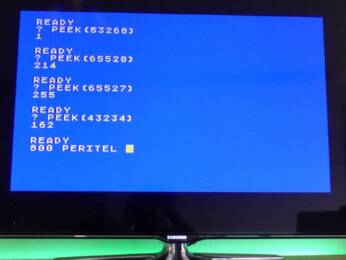NTSC/PAL/SECAM & PERITEL?
If you do not know what these acronyms refer to, please read the "NTSC/PAL/SECAM/PERITEL" article in the knowledge base first.
The computer
This PERITEL Atari 800 computer was officially released by Atari in France in September 1982. The event was announced by a full-page advertisement from Atari in the magazine "L'ordinateur Individuel" (Issue 40, September 1982). The computer was previewed at the SICOB trade fair held from September 22 to October 1 in Paris/La Défense, at the CNIT. Atari occupied booths 162-163.
The revision with an attached cable was probably released first, whilst the second revision — more elaborate — with a detachable cable was probably released later. This is an official Atari product, as demonstrated by the additional Atari components with specific Atari references (see below) and the very existence of several "Version PERITEL" French software, such as these tapes (see below):
- CX4101 BASIC PERITEL, Initiation à la programmation en Langage BASIC I
- CX4112 BASIC PERITEL, Etats et capitales des Etats-Unis, Version avec & sans instructions
- CX4123 BASIC PERITEL, Centrale nucléaire, Version 16 Ko & Version 32 Ko
- Etc...
As explained in the PAL Atari 800XL article, France was neither a PAL nor NTSC but a SECAM country. So, Atari France had to find a workaround to sell the Atari 400 & 800 computers locally, despite the lack of SECAM versions. The quick fix was to mod a PAL computer to add an RGB signal, generated in an additional PERITEL daughterboard-card, available in a PERITEL plug. This brings the total number of video cables for this machine to 3, and the total number of video signals to 4:
- Antenna
- Monitor (video composite aka CVBS) and
- Monitor (S-Video aka YC)
- PERITEL (in RGB mode)
On the PERITEL Atari 400 & early PERITEL Atari 800, the cable is not detachable.
On the later PERITEL Atari 800, the cable is detachable and plugged into the computer, in a 8-pin 270° DIN socket. Consequently, it is difficult today to find a later PERITEL Atari 800 with its PERITEL cable — because it was often lost.
The rare (early) revision with attached PERITEL cable
Just when I thought I had seen them all, I was able to acquire another variation of the PERITEL Atari 800 computer, this time with an attached cable (just like the PERITEL Atari 400). Curiouser and Curiouser. The mod is really professionally made, though, and the chassis nicely cut. The original computer was manufactured in late 1981, so that variation must have appeared before the one with the detachable cable (which usually comes with computers manufactured later, in 1982).
Please note that the PERITEL adaptor daughterboard-card is very different from the one usually found in the later PERITEL Atari 800. There are similarities with the version found in the PERITEL Atari 400.
The common (later) revision with detachable PERITEL cable
Aesthetically, later revision of the PERITEL Atari 800 can be immediately spotted by the additional 8-pin 270° DIN socket on the left side of the computer (usually without any socket there). If you are very lucky, a PERITEL hand-written sticker will also be present on the bottom.
3 later PERITEL Atari 800 computers
I am the happy owner of 3 of these machines, with two different revisions of the model. They all came fitted with 48 KiB (and the PAL OS cartridge CX801-P), with or without protective plastic shells, surely to reduce the heat.
2 revisions (at least?) of the later PERITEL Atari 800
Among my 3 machines, I noticed two different revisions:
- One that came with "CO61131 REV.A" stamped inside the chassis, with the "CAO61034" PERITEL adaptor, (c) 1982, ICTv 12-82.
- One that came with "CO61131 REV.X2A" stamped inside the chassis, with the "CAO61034 REV.X1A" PERITEL adaptor, (c) 1982.
The resulting RGB video signal is almost the same, quality-wise.
Inside the later PERITEL Atari 800 machine
Atari started the mod with a classic PAL Atari 800 as base (PAL computer with PAL OS), and added components. Please note that the regular video composite output (hidden here) is still present and still works, in parallel with the PERITEL output (see below).
Inside, you might spot an unusual "PTL" sticker; I assume that "PTL" stands for "PERITEL". Outside, in addition to the regular sticker with serial number, a hand-written sticker was also added with a PERITEL "PTL" specific serial number. I really wonder how many of these machines were made.
The PERITEL adaptor daughterboard-card inside the later PERITEL Atari 800
Another Atari fan drew my attention to this "OAK" logo on the CAO61034 adaptor, explaining that it matches the logo of OAK Industries, Inc., who were a manufacturer of cable TV decoders in the 1970s and 1980s. It might suggest that OAK may have made the PERITEL adaptor daughterboard for Atari...
Moreover, when you think about it, I find it strange that the card is labelled "PERITEL adaptor". A card made in France, for Atari France, for computers sold in France would have mentioned "Adaptateur PERITEL". Finally, the date 12-82 is not in French format.
The RGB signal from this PERITEL adaptor
And now the strangest part. This high quality RGB signal in a PERITEL plug only displays 8 colours. In fact, it ignores the actual colour to display. It simply translates the luminosity of the original colour into a new colour, picked in a palette of 8.
Obviously, this yields to very strange colours in some games, although they remain "playable". It is also important to note that there is a noticeable delay in the PERITEL video output. This is obvious with this "test setting" where the two signals are both displayed, side by side. The delay probably creates difficulties in game which are really time-critical.
Something strange
A video expert got my attention about something weird in that "luminance" to "new colour" conversion.
If you are familiar with the very classic colour PAL/SECAM test card, you know of course that the colours were not selected randomly. In that specific order, these colours create a perfect gradient from white to black when displayed on a black and white TV set.
But look what happens here... Take a black to white gradient in the Atari (any dark to bright gradient of any colour will produce the same result). Now see how this gradient is converted into 8 solid colours for the signal sent to the PERITEL plug. And now look what happens when that signal is displayed on an actual black and white TV set: the perfect gradient from white to black is lost, altered.
You had expected the original black to white gradient to re-appear, right? Well, no, because the PAL test card uses this order:
White, yellow, aqua, green, pink, red, blue, black (The RGB colours components are alternated as depicted below)
And this order of colours was not chosen at random, it is based on an equation that defines luminance:
The relative luminance of a colour is defined as
L = (0.2126 * Red) + (0.7152 * Green) + (0.0722 * Blue)
If you look at this equation carefully, you can see that green provides 72% of the luminance, red 21% and blue 7%.
So, to get this colour test card, you first vary the green, then the red, then the blue.
Note: in the following 4 diagrams, the red arrows show the colours that are affected by the decisions taken by Atari for these Atari 800 (and 400) PERITEL models.
Whilst the signal generated by the Atari 800 (and 400) PERITEL adaptors use this order:
White, aqua, yellow, green, pink, blue, red, black
The Atari 800 (and 400) PERITEL adaptors change the usual order. It first varies the green, then the blue, then the red.
There must be a good reason for this. My assumption (to be confirmed) is that the purpose was to get a blue background with a yellow text and cursor in BASIC, without any alteration of the OS or the BASIC.
The colour settings in BASIC are as follows:
SETCOLOR 4,0,0 --> Black outer border, brightness 0
SETCOLOR 2,9,4 --> Blue background, brightness 4
SETCOLOR 1,0,10 --> Text brightness 10 (same colour as background)
With the standard OS settings and standard BASIC colours, if you use the order of colours on the PAL/SECAM test card, you get a red (brightness 4) background and a cyan (brightness 10) text and cursor. Talk about unusual (not to say ugly).
Note: in the following 2 diagrams, the green arrows show the colours that are used in Atari BASIC GRAPHICS mode 0, that is, the editor.
With the same standard OS settings and standard BASIC colours, but this time using the order of colours generated by the PERITEL Atari, you get a blue (brightness 4) background and a yellow (brightness 10) text and cursor.
So it was much more natural, in line with what you saw on many computers at the time.
Running software (games!) on the two video outputs
On the large display (left): RGB signal from the PERITEL adaptor. On the small display (right): signal from regular Monitor (video composite, CVBS) connector.
PERITEL Specific software
Since Atari considered from the start {1} that the 400 & 800 models were serious computers for learning — and not only excellent computers for gaming! —, they made the extra effort to create a French specific version of existing educational programs especially for these PERITEL Atari 400 & 800.
{1} The first cartridge, CXL4001, is "Educational System — Master cartridge". Then comes "Basic" (CXL4002), then "Assembler editor" (CXL4003), then the first game "Basketball" (CXL4004).
Power supply
Last but not least, the PERITEL Atari 800 came with unusual power supplies, that provided 2x 9V AC at 1.7A + 1x 6V DC at 350mA.
This is very convenient: it allows to power 3 Atari products, with only one transformer:
- An Atari 800 computer (9V AC)
- An Atari 810 floppy disk drive (9V AC)
- An Atari 410P cassette tape player/recorder (6V DC, with the 3.5 mono jack)
PEEK identification
Using "PEEK" instructions in BASIC to find out about the OS, Basic and NTSC/PAL versions.
Please don't pay attention to the ratio (right picture), it's the TV set displaying 4:3 in 16:9. Obviously the generated image is 4:3.
For your information, the results are:
PEEK(53268) = 1 [PAL/SECAM]
PEEK(65528) = 214 [400/800 OS Rev. A/PAL, 1979-06 (common)]
PEEK(65527) = 255 [Not a XL/XE]
PEEK(43234) = 162 [Atari BASIC Rev. A, in external cartridge]
Video signals output
Here is a summary of the video signals available on this particular model.
To be able to use one of these video signals to display an image, you obviously need to check that your TV or video monitor has an input for the specific video signal you intend to use. If it doesn't have it, the easiest thing to do is to use a modern video converter/upscaler to convert the video signal available to you to HDMI, for example.
| Video signal | Available on | Remark |
|---|---|---|
| PAL RF Antenna | Attached TV aerial cord | 256 colours (GTIA) |
| PAL Video Composite aka CVBS | DIN, Monitor socket | 256 colours (GTIA) |
| PAL Y & C, aka S-Video | DIN, Monitor socket | 256 colours (GTIA) |
| RGB | Attached PERITEL cord | 8 colours, earlier models |
| RGB | DIN Left socket + detachable PERITEL cord | 8 colours, later models |
Special thanks to Jerome Delsarte for all this information and his expertise on video signals.
